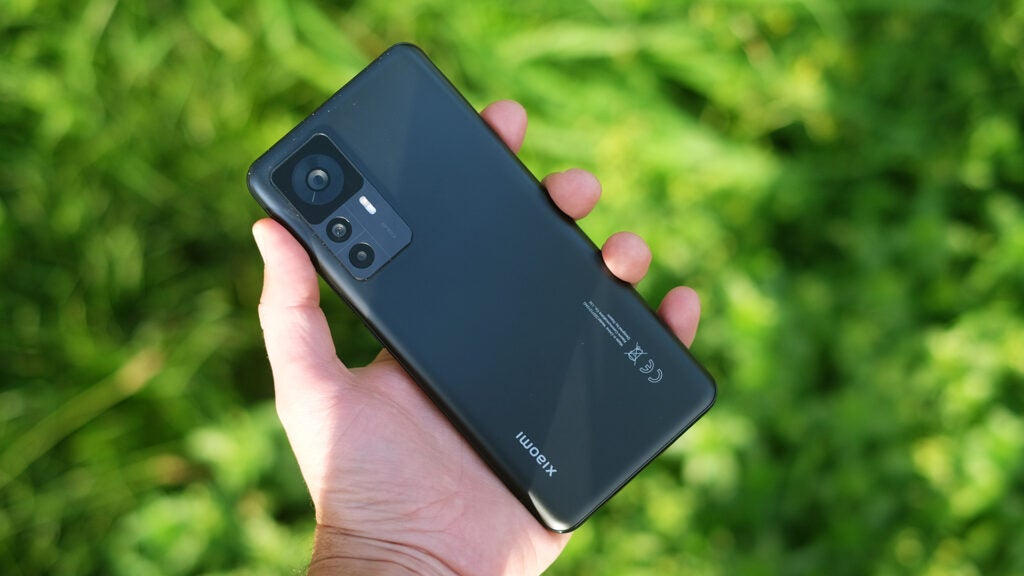Big, powerful and equipped with an OLED screen bright enough to shrug off the sun, the Xiaomi 12T is a versatile phone for content guzzlers. But it’s disappointing to see limited progress and some downgrades from Xiaomi’s last model.
Pros
- 120W fast charging
- Bright, sharper-than-average screen
- High-performance processor
Cons
- Weak secondary cameras
- Not as well made as the Xiaomi 11T
- Very limited water resistance
-
120W chargingThis phone’s 120W adapter can charge the battery to 100% in 25mins and reach 50% in 12mins -
MediaTek Dimension 8100 SoCIt may not be as famous as its Qualcomm Snapdragon rivals, but this chipset offers flagship-like gaming and general performance -
Stereo speakersWith drivers on the phone’s top and bottom, the Xiaomi 12T is made to entertain
Introduction
The Xiaomi 12T is a mid-range Android phone and the lower-cost version of the recently reviewed Xiaomi 12T Pro.
Firstly, the two phones are similar. The 12T has a MediaTek processor instead of a Snapdragon one, but it’s a strong SoC. The primary rear camera has a 108-megapixel sensor instead of a 200-megapixel one. But, in many scenarios, their real-world performance isn’t actually that different. Neither is a class leader, but both can take decent photos.
The 12T costs £150 less than the 12T Pro, a substantial saving that, for cost-conscious folks, makes it more appealing. I found the 12T’s battery lasts a bit longer too, although both are solid enough in this area.
However, in some respects, it’s a worse phone than its direct predecessor, the Xiaomi 11T. The quality of the build has diminished, and the secondary macro camera is downgraded from a fun-to-use 5-megapixel telephoto to the classic dismal 2-megapixel sensor. The 12T’s processor is better, but you aren’t always able to capitalise on its substantial power because some games will not be optimised for this phone.
Maybe the 12T is just a casualty of global financial pressures, but it’s still a sound phone in just about every area. It starts at £499 for the 128GB model, rising to £549 for the 256GB one, and has been spotted online for as little as £399 – a deal good enough to counter many of the issues raised in this review.
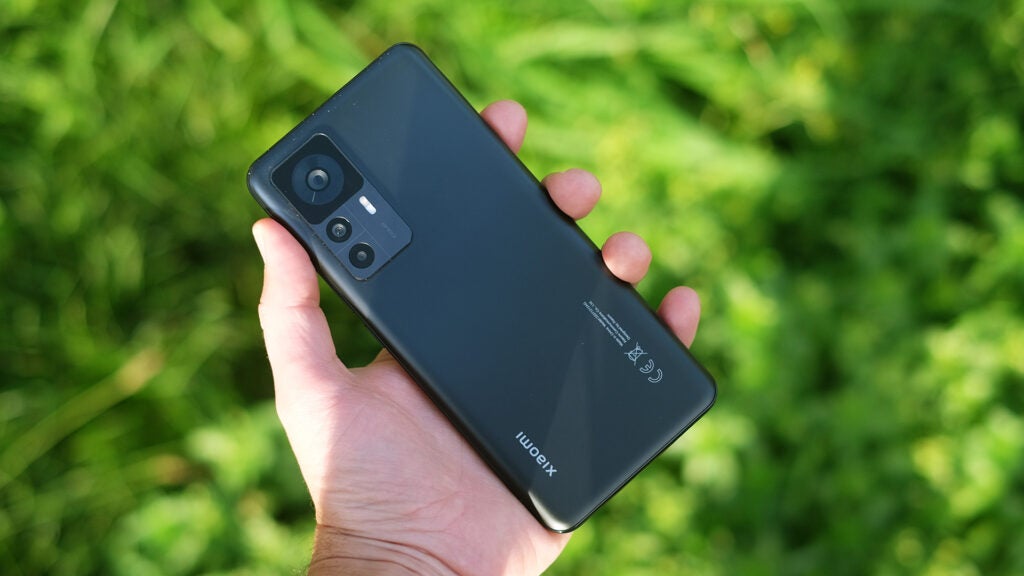
Design and Screen
- Glass front and back
- Basic plastic sides are a downgrade from the Xiaomi 11T
- Quite large and chunky
The Xiaomi 12T looks almost identical to the 12T Pro. A couple of times I’ve had to check whether it says “108MP” or “200MP” on the camera housing to tell them apart.
That is, you could argue, good news for the more affordable 12T. There’s nothing too ambitious going on here in terms of style or design, but the matte finish of the rear glass – and it is real glass – looks great if you are out for a lower-key look.
However, the 12T is actually a very clear build downgrade from the 11T. That phone had aluminium sides and top-tier Gorilla Glass Victus glass on the front and back. This one has plastic sides and Gorilla Glass 5 instead of Victus. The former is slightly less advanced – not as hard and impact-resistant, according to maker Corning.
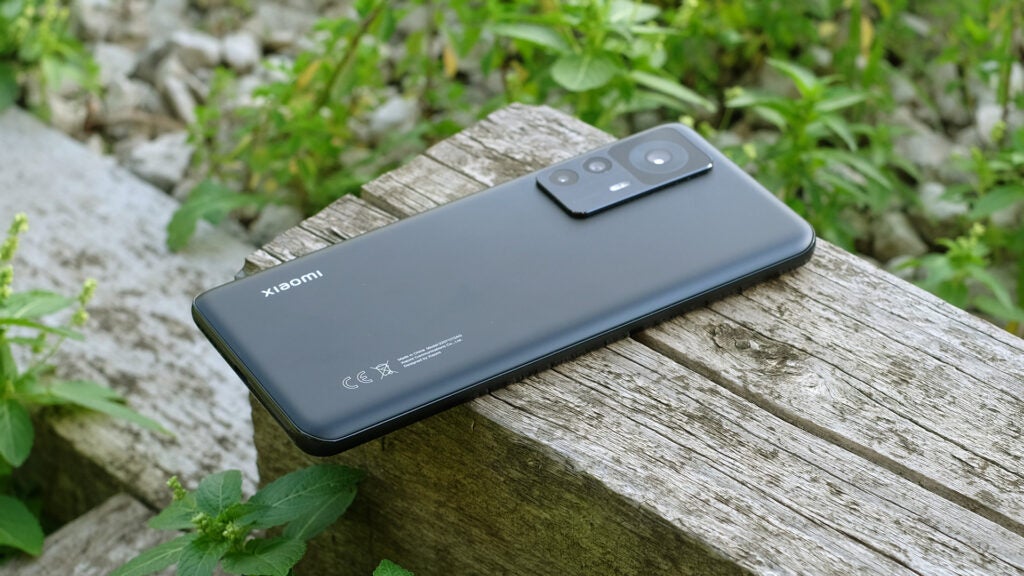
The 12T feels good but not quite like a true high-end Android due to all that plastic. It also has very limited IP53 water resistance. With level 3 resistance compared with top-tier 8 of an iPhone 14, it’s only really made to stand up to a bit of rain, rather than a proper dunking.
Xiaomi has lost the overt build lead it had over companies like Samsung at this price range. And for similar money, the Pixel 7 has Victus glass, IP68 water resistance and a full metal and glass outer – no contest.
Of course, the Pixel 7 is a much smaller Android, making the Xiaomi 12T seem better suited for gaming and watching videos. This leads to another point you should consider. Like other Xiaomi phones of this size, the 12T is large. And it’s fairly thick, at 8.6mm, with no tapered front glass to trick your hands into thinking it’s thinner.
This phone also lacks a headphone jack and a microSD slot. You can choose from either 128GB or 256GB of storage – enough for most folks. The in-screen fingerprint scanner feels fast and reliable, and the stereo speakers are loud and offer a good stereo image, although the bass here isn’t as powerful as on some other phones, including the much smaller Asus Zenfone 9.
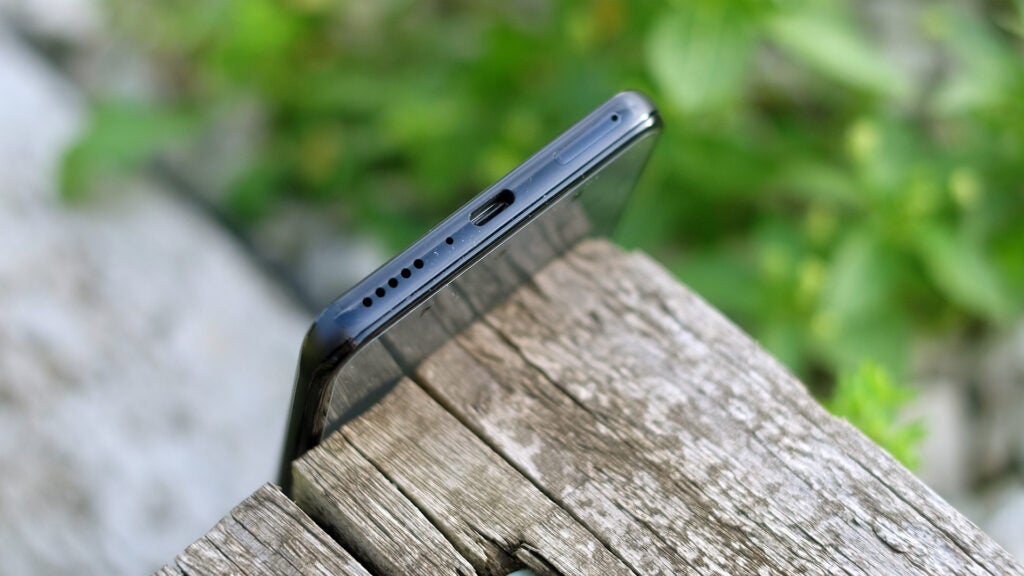
The Xiaomi 12T has not managed to stand out so far, but it does have an unusual screen: a 6.67-inch OLED with a resolution of 2712 x 1220 pixels. The size and panel style are normal, but the resolution is significantly higher than the 2400 x 1080-pixel norm.
It offers something of a middle ground between 1080p and the 1440p of the top-tier Androids. I don’t think this alone is enough to warrant buying this phone, but that’s largely because standard-res phones don’t look all that different from a normal distance.
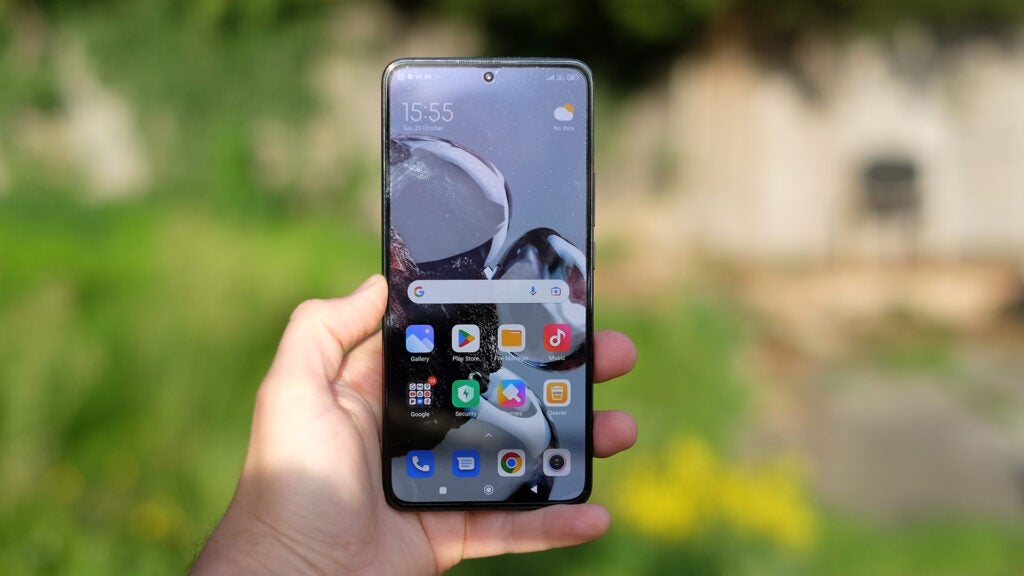
Other aspects of the 12T’s screen are also strong. OLED means contrast is perfect in the right conditions and colour depth is impressive.
Brightness is strong, too. Much lither than the 12T Pro, the 12T reaches 490 nits indoors and can hit 890 nits outdoors in bright sunlight, enough for great outdoor visibility – this is a bright phone.
A wide colour gamut display supports HDR too – you couldn’t ask for much more at that price. Like in other mid-tier Xiaomi phones, the maximum refresh rate is 120Hz, matching that of the most expensive Androids.
Performance
- Android 12
- Custom UI has some quirks
- Good gaming performance but imperfect third-party optimisation
The Xiaomi 12T runs Android 12 and has Xiaomi’s MIUI on top. Its default rounded-off square icons look a bit stiffer than some, but the animations feel good and the phone has more than enough power and RAM (8GB) to keep the system running smoothly.
A few parts are a little odd, though. Xiaomi messes with how the notifications’ drop-down and feature toggle panes work. The norm is you flick down once for notifications, twice for Wi-Fi toggles, and so on. Here, flicks from the left side of the screen take you to notifications and those from the right to feature controls.
The screen is a bit too big to make this feel comfortable. And while you can flick left and right to toggle between the two, this all seems like Xiaomi complicating stuff that was fine the way it was, just to be different.
Aside from this and the standard series of unwanted apps Xiaomi preinstalls, like Amazon and games such as Genshin Impact and Tile Fun, the software is generally fine.
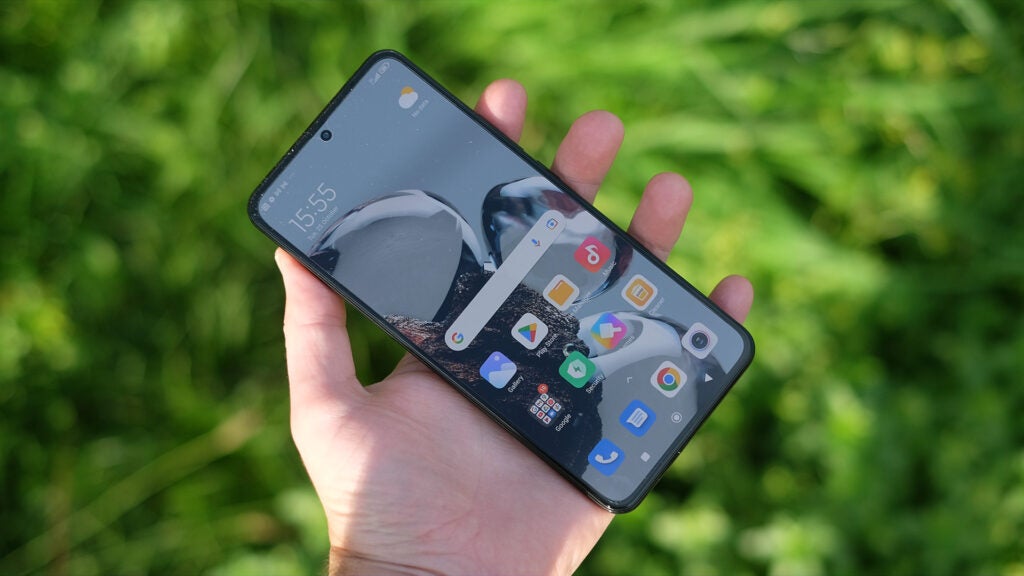
I’ve only noticed one significant bug in my time with the 12T. It has a habit of refusing to come out of a black-screen state after a night spent asleep – something I’ve solved by hard resetting (not factory resetting) the phone. It’s happened a few times. However, my actual days spent with the phone were painless.
The processor probably helps. It’s the MediaTek Dimensity 8100, a chipset with power comparable with something like the Snapdragon 888, a popular pick for 2021 flagship phones and value-led performance models in 2022.
I have not been able to fully test what it can do for a couple of reasons. 3DMark’s testing app is blocked on my Xiaomi 12T, and that app is a good way to get an idea of how strong a phone should be at gaming. Fortnite has also not been fully optimised for this phone, meaning you can only play the game at the basic settings available to all models that can get past the load screen: medium visuals, 30fps. This isn’t much of a challenge for the Dimensity 8100.
From a review perspective, this stuff sucks.
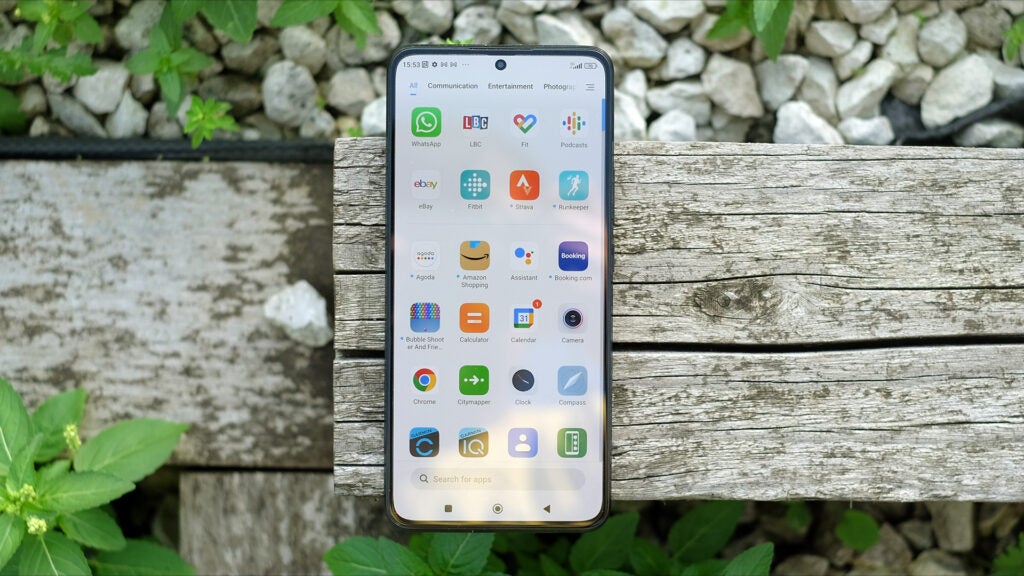
However, we can get a good idea of its performance potential through Geekbench. The Xiaomi 12T scores 3512 points in the standard Geekbench 5 CPU test, 899 per core. It’s a match not just for the Snapdragon 888 but also for the newer Snapdragon 8 Gen 1 flagship.
In the GPU-led OpenCL Geekbench 5 benchmark, the 12T scores 4681 points – very similar to what you’d see from a Snapdragon 888 phone, but not the Snapdragon 8 Gen 1, which would perform better. As expected, the phone is a great performer on both the CPU and GPU sides, but true flagship chipsets of 2022 have better peak gaming power.
I don’t like running primarily off abstracted benchmarks for gaming impressions, so I also played Ark: Survival Evolved for a while with all the graphics settings maxed. This can make some less powerful phones chug a bit, but the 12T had zero issues, and the back only got a little warm.
This seems to be an advantage of the Dimensity 1200/1300/8100 chipsets: I have never had overheating problems with phones that use them, yet.
Camera
- Solid 108-megapixel primary camera handles all situations fairly well
- Secondary cameras are just OK, considering the price
- Poor 2-megapixel macro
The Xiaomi 12T has three rear cameras. We get a 108-megapixel Samsung HM6 with OIS, an 8-megapixel ultra-wide Samsung S5K4H7 sensor, and a tiny 2-megapixel Galaxycore macro camera.
These secondary cameras are the kind of stuff you might find in mid-range Androids significantly cheaper than the Xiaomi 12T. And Realme has used the primary camera’s HM6 sensor in the cheaper Realme 9 (but without OIS).
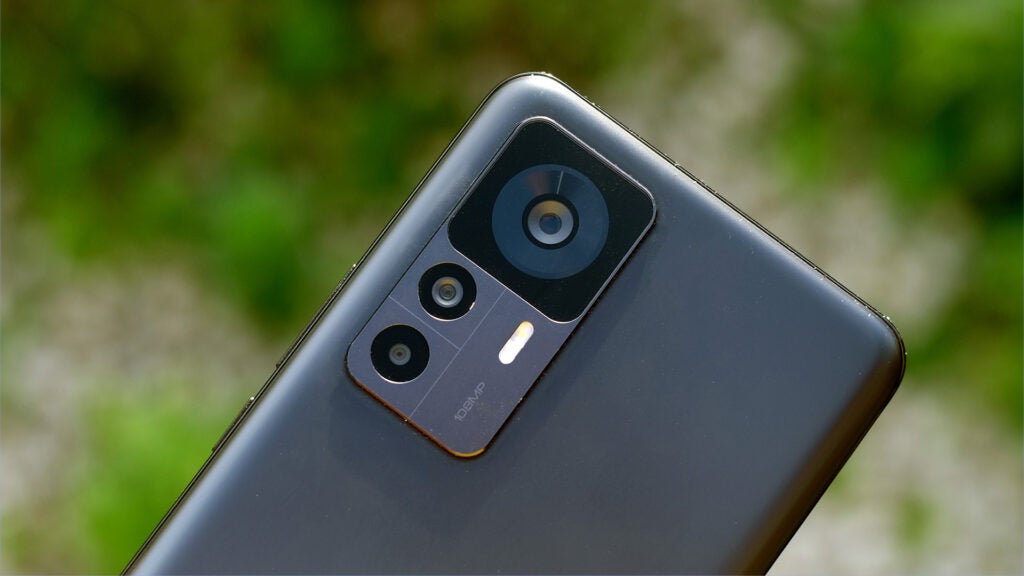
This array is not quite at the level of the Pixel 7, which has a better ultra-wide camera and an at least arguably superior primary camera sensor, the Samsung GN1. But what are 12T’s pictures like?
The shooting experience is very similar to that of the 200-megapixel 12T Pro. However, I actually often preferred the native colour of the 12T over the Pro. While the primary camera in the Pro tends to take cooler images than the ultra-wide, the 12T’s are consistently slightly warmer, which produces more flattering scenes of greenery and other nature shots.
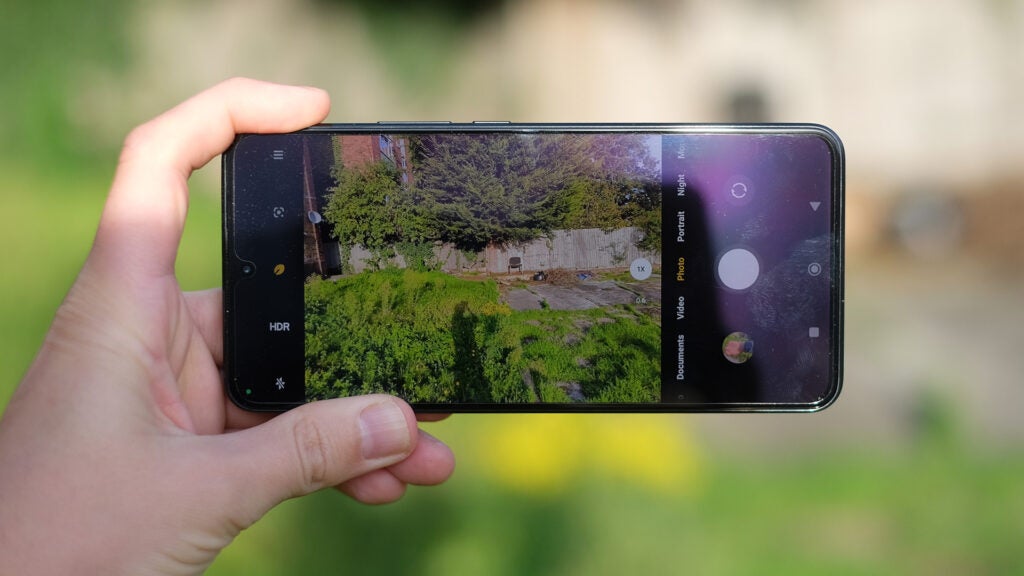
Day-lit shots often look great, with fairly realistic colours, high dynamic range, and a good hit rate of images without messed-up parameters. On a few occasions, the HDR mode didn’t seem to engage properly, but these are fairly rare. And I saw very little of the oversaturation effect of some of the 12T Pro images.
Unsurprisingly, the 200-megapixel Pro can take better 2x digital zoom shots than this phone. While the 12T ones hold up OK, when opening them up on a computer monitor, you can see some signs of image quality compromise before you even zoom in.
The ultra-wide’s shots don’t hold up that well to close scrutiny, either. They lack the information to withstand much cropping and turn quite soft at the corners. This wouldn’t be an issue if this phone was a little cheaper. The ultra-wide can take lovely pics – but at this price, you can get better ultra-wide cameras.








Night shooting brings similar conclusions. The Xiaomi 12T can take respectable night images, but they just don’t match up to the best at this price.
Without using the Night mode, pictures can look a little soft and vague. The Night mode tends to improve sharpness and helps with colour and mid-tone detail, but you’ll see better dynamic range and shadow detail retrieval in some cheaper phones.
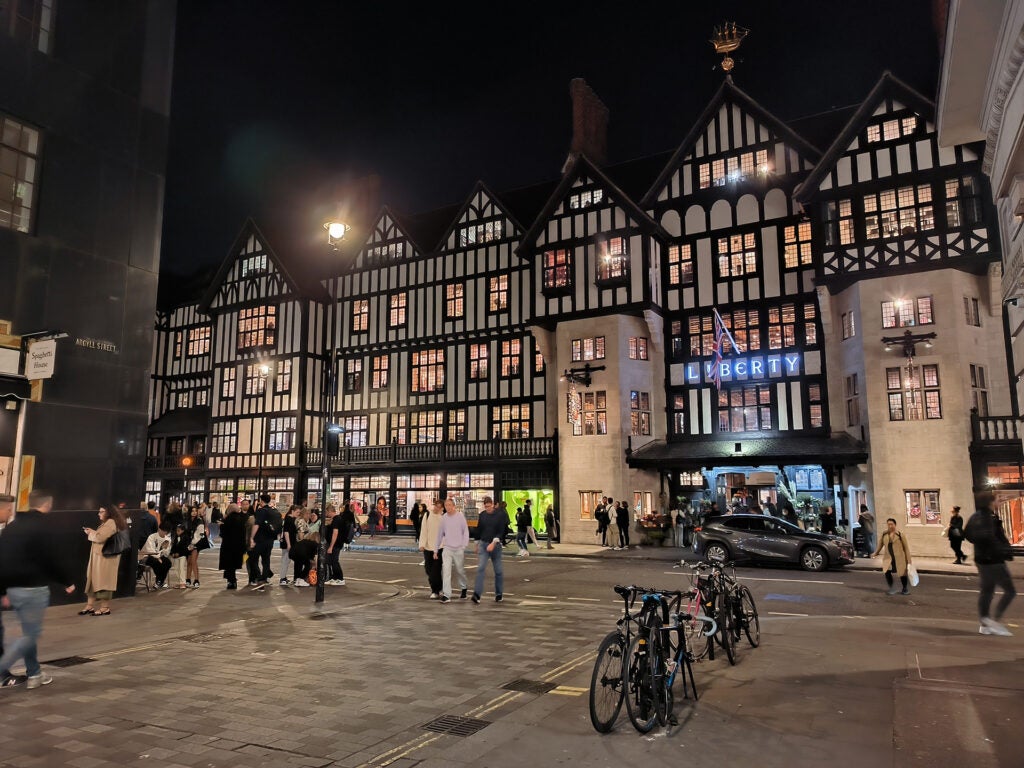
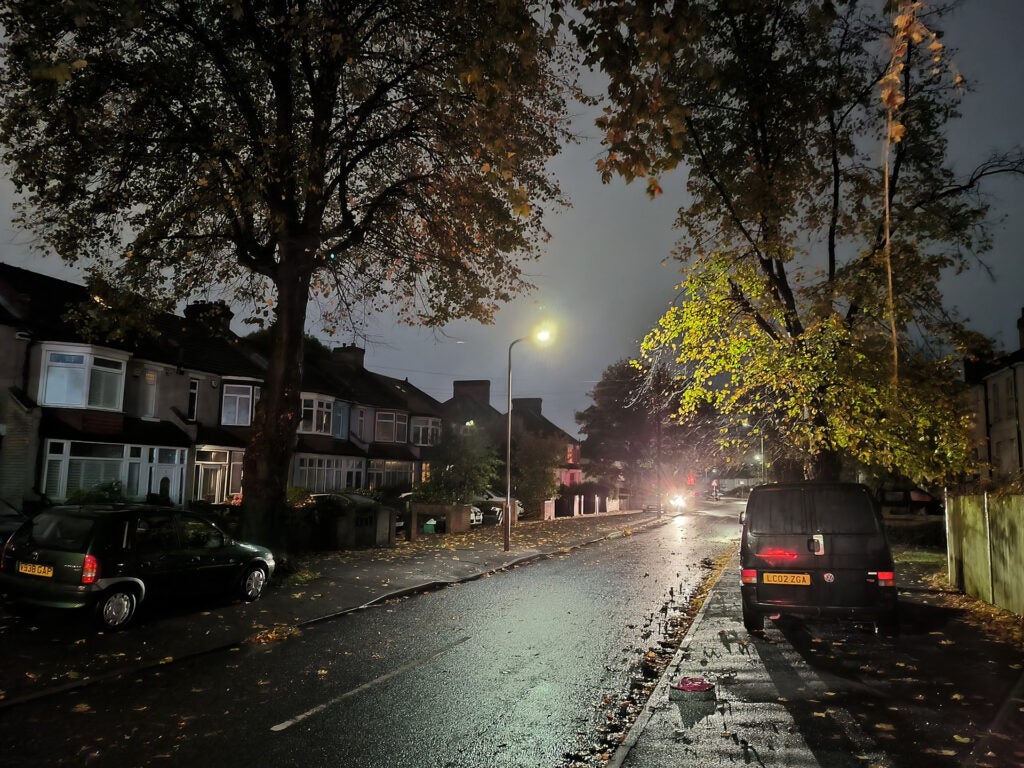
The 12T’s video also lacks the top-end capabilities seen in the 12T Pro. You can shoot at up to 4K resolution, 30 frames per second, whereas the Pro can handle 8K/30fps and, more importantly, 4K/60fps.
You don’t get high-end chops at a mid-range price here. However, both 4K and 1080p video capture look good, with notably solid sharpness at the lower-end resolution. Both have good stabilisation, so flicking between them based on whether you value frame rate or detail/sharpness is a good idea.
The selfie camera is likely the second strongest of the phone. It has a 20-megapixel sensor, and produces solid selfies. It can even handle very poor lighting: selfies turn soft, but you can still make out people’s faces clearly enough.
Battery life
- A flat to completely full charge takes 28mins
- Solid but not standard-setting battery life
- No wireless charging
The Xiaomi 12T has a 5000mAh battery, like almost all phones Xiaomi makes of this size. Its stamina is perfectly solid, leaving me with about 30%, sometimes 35%, charge by bedtime. I find it lasted a little longer than the 12T Pro, although I was unable to nail down why in some partial run-down stress tests, where their results were similar.
That said, Generic Battery Drainer did routinely report that the 12T ran at a lower battery voltage and temperature.
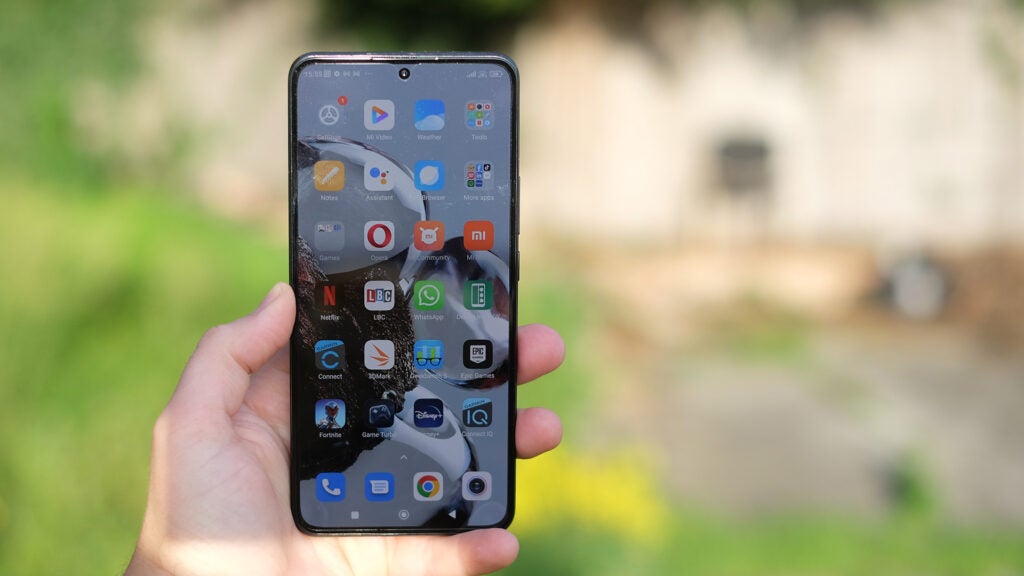
Charging speed is the main event here. The 12T has a 120W charger. It only peaks at 110W, according to my power meter, but that still outclasses almost every other phone at that price.
When charging from a battery so flat that the phone will no longer switch on, I found it takes 25mins to hit 100%, and the phone stops drawing power at the 28min mark. It hit 50% charge at 12mins. Xiaomi says a full charge in 19 minutes is possible – this is likely when not charging from a completely dead state, which slows down the charging rate in the first few minutes considerably.
With general use, most folks won’t need to give the 12T a mid-afternoon charge. But if you do, just 5 minutes plugged in will have a big impact. It’s mostly good news here, but there’s no wireless charging – a common omission among Xiaomi’s more value-led phones.
Should you buy it?
This is a strong entertainment phone thanks to its big and bright OLED screen, near-flagship-grade processor and stereo speakers. Superfast charging is also a boon to heavy users.
The 12T ultimately seems a bit of an ordinary phone, compared to some older Xiaomi models, with certain hardware cuts making it seem less obviously value-packed than the 11T from a year earlier.
Final Thoughts
The Xiaomi 12T is a good all-rounder. It’s powerful, the camera produces nice images during the day and night, and the screen is superior to phone mid-rangers, with more pixels and above-average brightness.
While the battery life is not standard-setting, it’s solid, and the charging speed is excellent. It’s just a shame the 12T isn’t actually an upgrade from the old Xiaomi 11T in all respects. Aspects of the 12T’s build are worse, and the macro camera is much worse. You might want to see if you can get that older model for cheap before it disappears entirely.
However, I find the 12T easier to recommend than the pricier 12T Pro, as the latter’s upgraded 200-megapixel camera isn’t actually much better than the former’s 108-megapixel one. And while the 12T Pro has a punchier processor, it can overheat when under strain for longer periods, which I haven’t seen happening with the 12T.
FAQs
It has basic IP53 water resistance, which is only fit for protection from light rain, for example.
There’s no 3.5mm headphone jack, so you’ll have to use USB-C or wireless headphones.
It doesn’t support wireless charging; only cable charging is available.
Jargon buster
IP rating
An abbreviation for ‘Ingress Protection Code’, which lets you know to what extent a device might be waterproof or dustproof.
OLED
Organic Light Emitting Diode is panel technology that allows each individual pixel to produce light rather than relying on a backlight. This enables the screen to accurately display blacks by turning off the pixel, resulting in improved contrast compared to conventional LCD panels.
HDR
HDR stands for High Dynamic Range and refers to contrast (or difference) between the brightest and darkest parts of an image. HDR content preserves details in the darkest and brightest areas of a picture, details that are often lost in old imaging standards. HDR10 is mandated to be included on all HDR TVs. It’s also supported by 4K projectors.

